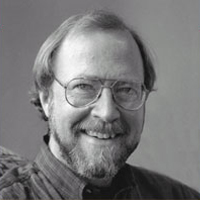


Member, Freestyle Advisory Board of Photographic Professionals
Alan Ross has earned an international reputation as a specialist in the art of black-and-white photography: as an artist, educator and printer. He was Ansel Adams' Photographic Assistant in Carmel from 1974 to 1979 and was integrally involved in Adams' books, teaching, and production of fine prints. He has been the exclusive printer of Ansel Adams' Yosemite Special Edition negatives for over twenty-eight years. He operated a commercial photography studio in San Francisco for twelve years with projects ranging from world-wide campaigns for the Bank of America to landscape murals for the National Park Service. He relocated to Santa Fe in 1993 to devote more of his energies to his personal work, teaching, and assignment work for select clients, including Boeing, Nike, IBM, and MCI. His photography hangs in collections and galleries throughout the country and internationally, and he has led workshops in locations from Yosemite to China. In spite of his time spent with Ansel Adams and his ongoing involvement with Adams' work, Alan considers himself something of a Zone System heretic. It's perfectly all right to make your own rules, and the Zone System is not the Zen System. And neither are for everyone! Alan regards himself as a classicist with regard to his photographic approach, but not a purist. His work in the last twenty years has been mostly with an 8x10 view camera but he has no philosophical objection to a digital "point-and-shoot" camera. He has one and likes it very much. The 8x10 is getting bigger and heavier every day. He used to object to being pigeonholed as a Landscape Photographer, when the truth was that he liked photographing all sorts of things. Since his hair started to fall out he's mellowed a bit and he doesn't mind being called a Landscape Photographer because he still photographs whatever he wants - it's just that he's encountered a number of landscapes that needed photographing!